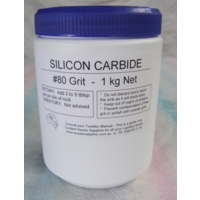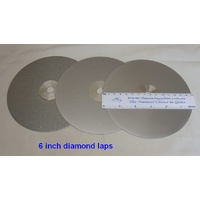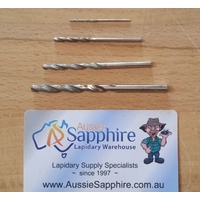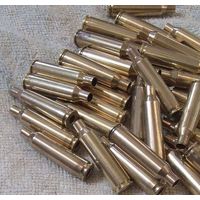Traditionally, reloaders would clean their brass using a vibratory tumbler and a dry media such as crushed nut shell or corn cob charged with red rouge. In recent years, we have seen most switch over to the wet tumbling method using stainless steel media. The wet method has a number of advantages over dry tumbling:
- Generally works faster compared to using an ultrasonic cleaner or vibe tumbler.
- Will clean and polish much more effectively both outside and inside the brass. Even if they are heavily tarnished, you can clean and polish your brass like brand new!
- The media will last indefinitely - it does not wear out or lose effectiveness.
- Simple and predictable process - it just works.
- No dust generated during tumbling - this is safer for you.
Wet tumbling requires a slightly higher initial investment compared to a cheap reloader vibe tumbler with dry media but once you are set up, the ongoing cost is minimal and the tumblers are very robust. If you do a lot of reloading, you will get your investment back easily but the start-up cost is a little higher.
First thing is to choose the appropriate size tumbler - you need to work out how many pieces you want to do in a batch and how much space that batch will take up. Compare to the available choices from our range of tumblers using the barrel size dimensions and effective volume measurement in the datasheet and you are ready to go.
Generally you will run about 1.5 times as much stainless media (in kilograms) as brass so if you are cleaning 2 pounds of brass, plan to tumble this with 3 to 4 pounds of stainless pins. The pins are heavier of course so they will not take up as much room as the brass inside the tumbler barrel. Aim to fill the barrel with brass/media about half to 2/3 full - add water up to the level of the media and the recommended amount of burnishing compound. Feel free to experiement with these proportions - they are just a guide to help you get started.
There are many options for burnishing compound - you will see the American sites recommending Liquid Detergent and Lemishine. In our experience, not all liquid detergents are suitable and some are potentially damaging to the rubber barrels. If you want to use this option, look for a type that has few addiitonal additives as these can sometimes adversely affect the result. We recommend and supply a specific burnishing compound called MP103 which is designed specifically for tumble polishing metals such as brass - it is a specialised powdered soap which is used at the rate of approximately 20 grams per litre of water. Lemishine is optional - many reloaders do not bother with it - if you want to try this, just get some Citric Acid powder from the supermarket and see if it gives a better shine.
It is important not to tumble for too long - as the brass is cleaned, tarnish and residue from inside the base will be held in suspension in the water. If you tumble for too long, the water can be overloaded and start to redeposit back onto the brass so you need to refresh the water before that point. Generally you will be happy with the brass well before that point. However, we do recommend checking every half hour or so for the first few batches until you get a feel for how long it will take - usually only an hour or two. Do NOT run the tumbler overnight as this risks overdoing it.
Once you have finished tumbling, empty out the barrel and rinse everything thoroughly, separate the cases from the pins using a separator or sieve and dry the brass completely. When storing your stainless pins, either store them in a jar or the barrel under water or dry them completely. The pins are made from 304 Stainless Steel and so are extremely rust resistant but they CAN rust if stored damp in an enclosed container. If you are using them again soon, it is usually fine to just leave them in an OPEN barrel or jar ready to use.
To see relevant products for tumbling brass, please see our Reloader Category.
Please follow the links below for tutorials, reviews and discussions on the wet polishing method:
- Stainless Steel Media video tutorial
- Accurate Shooter review by Jason Koplin
- Video using a QT12 tumbler
- Mass Reloading review on wet tumbling
- Shooting Australia forum - one discussion here but many others
WHAT TYPE OF TUMBLER:
Do I need a Thumler Model B? These ones are popular but it does not really matter what brand you choose. Tumblers are rated for weight (usually in pounds) - this weight rating does include the weight of the barrel and all contents. Often you have a bit of leeway here for this short-term type tumbling but try not to exceed the rated weight too much. The main thing is to assess the effective volume of the different sized tumblers and choose the best fit for your batch size. Note though that the Lortone QT12 is a very similar size and in some ways has better features. See this blog article for a detailed comparison of the two models.
So what type of tumbler does not really matter as long as you choose one of appropriate size. Many people make their own tumblers and this is fine - or you can make your tumbler base and buy a barrel from us. The basic design is relatively simple and very achievable for someone handy in the workshop. If you need to go very large capacity, consider our commercial series tumblers.
How do you choose the right size?
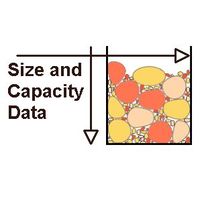
First step is to work out what size batch you want to do by measuring how much volume a certain number of cases consumes - use a kitchen measuring jug to work out how many cases fit in one Litre. Then use the information in the size document below to select the most appropriate size barrel:
Information on Tumbling Barrel/Bowl Size and Media Density
For reloading, we suggest filling the barrel about half full with brass - add the relevant amount of stainless pins and water up to the level of the brass/media. Add about 1 tablespoon of burnishing compound PER litre of water. Adjust the recipe to suit as you get more experienced - sometimes tweaking it just a bit gives better results.
If you have any queries about wet tumbling, feel free to contact us any time.

